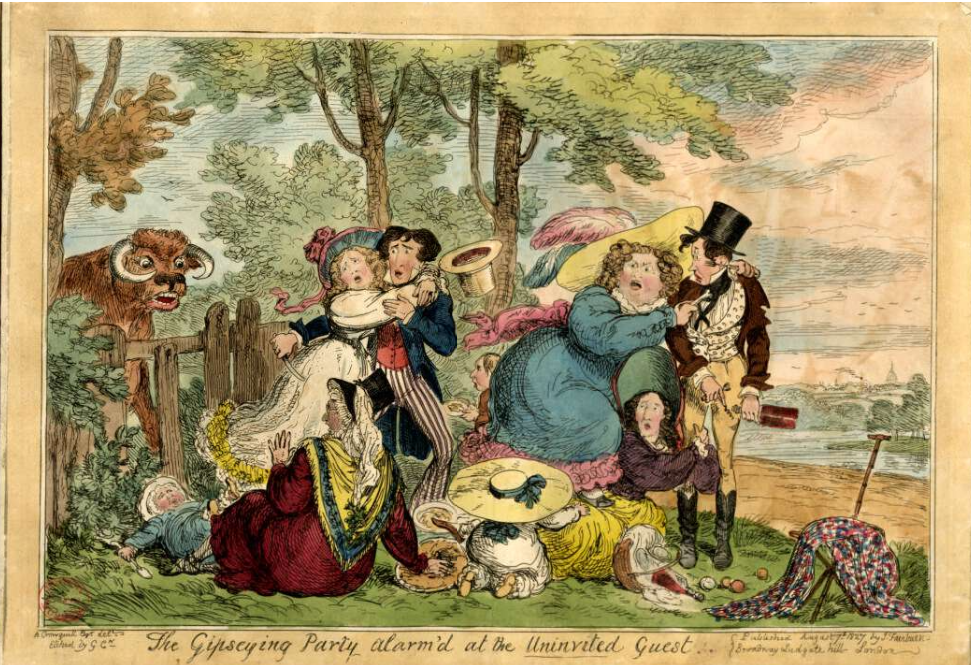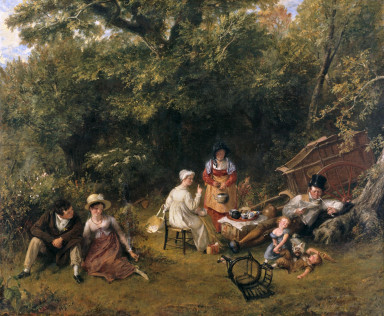When Gypsying was exhibited at the Royal Academy, a reviewer carped that Leslie’s Londoners are insensitive Cockneys (a derogatory term) unable to appreciate the country. Presumably, only the upper classes know how to do it right.
When Leslie used the term as a euphemism for picnicking, “gypsying” was common. It was often used to describe a “gipsey campfire” for those who liked preparing food alfresco.
A critic reviewing the RA exhibition thought “gypsying” crude and corrects Leslie by indicating that the better word for such a day out is “ruralizing.” “All the details of the picture are excellent,” the reviewer reports, “though as a painting, it is deficient in effect. The Cockney passion for ruralizing is happily ridiculed in the male Londoner, whose recreation amid nature’s loveliness is the reading of a Newspaper. On the ground, two children tumbling in all the glory of unrestrained freedom, and not more checked by their mother’s cautionary gesture that their noise will awaken the baby in her arms than encouraged by the fond admiration with which their grandmother or nurse contemplates their gambols. An episode of two lovers is delightfully arch and sweet, and the whole does infinite credit to the taste of the art.“
When Asher B. Durand engraved Leslie’s painting for his American audience, he changed the title to Londoners Gypseying (1822). George Cruikshank. The Gypseying Party Alarm’d at the Uninvited Guest (1827) pokes fun at alfresco partying. The uninvited guest is a common joke that Martin Amis uses in Dead Babies (1975). 
As times changed, neither gypsying nor ruralizing carried over as a euphemism for a picnic.
Elizabeth Gaskell was of two minds about gypsy or salon parties. In Company Manners (1854), she contends, “gipsies must be people of quick impulse and ready wit; entering into fresh ideas and new modes of life with joyous ardour and energy, and fertile in expedients for extricating themselves from the various difficulties into which their wandering life leads them. They must have a lofty disregard for “convenances,” and yet a power of graceful adaptation. They evidently have a vivid sense of the picturesque, and a love of adventure.” But in North and South (1855), she’s sure “anything of a gipsy or make-shift life was really distasteful.”
See Charles Robert Leslie. Londoners Gypsying (1820), oil on canvas.
Geffrye Museum, London; London Literary Gazette and Journal of Belles Lettres, Arts, Sciences, etc. (1820 ); Asher B. Durand. [Picnic after Charles Robert Leslie] (1822); George Cruikshank. The Gipseying Party Alarm’d at the Uninvited Guest (1827), engraving. London: John Fairburn, 1827; Sarah Houghton-Walker. Representations of the Gypsy in the Romantic Period. Oxford: Oxford University Press, 2014

